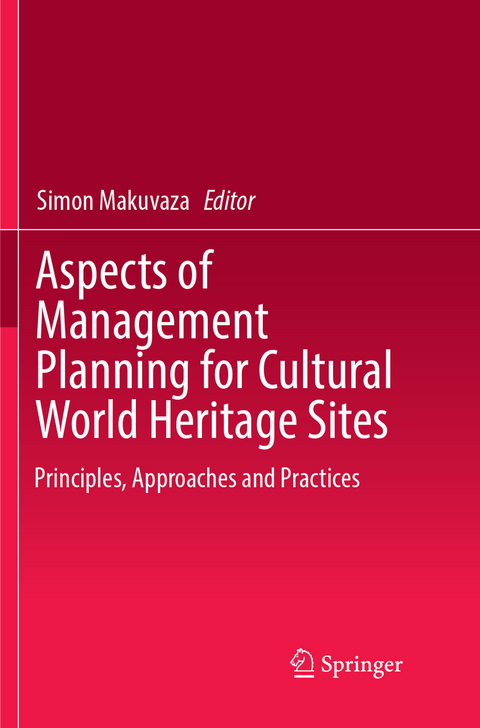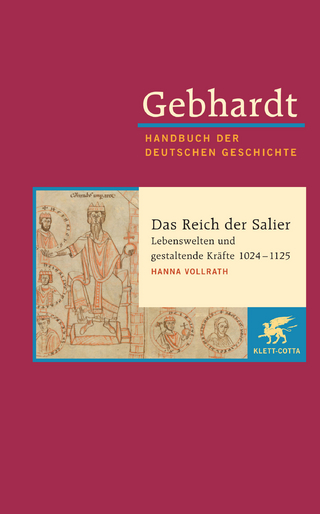
Aspects of Management Planning for Cultural World Heritage Sites
Springer International Publishing (Verlag)
978-3-319-88853-8 (ISBN)
Every site that is inscribed on the World Heritage List (WHL) must have a management plan or some other management system. According to the UNESCO Operational Guidelines, the purpose of a management plan is to ensure the effective protection of the nominated property for present and future generations. This requirement was in part necessitated by the need to implement real systems of monitoring on the management of World Heritage Sites.
Since its implementation in 2005, discussion on the function and the contents of management plans for World Heritage Sites has grown tremendously. The discussions have mainly been focused on the theoretical frameworks of World Heritage site management plans and proposals of practical guidelines for their implementation.
This volume provides a platform for heritage practitioners, especially those working at Cultural World Heritage Sites, to put in writing their experiences and impressions about the implementation of site management plans at properties that are inscribed on the WHL. Cultural World Heritage Sites in this case refer to world heritage properties such as archaeological sites, cultural landscapes, religious sites and architectural structures. The book also seeks to examine the extent to which site management plans have been or are being implemented at Cultural World Heritage Sites.
Simon Makuvaza Research FellowFaculty of the Built EnvironmentNational University of Science and TechnologyPO Box AC 939AscotBulawayoZimbabwe
Part 1 - Historical Overview.- Chapter 1 - Introduction of Management Planning for Cultural World Heritage Sites.- Chapter 2 - The World Heritage Convention and its Management Concept.- Chapter 3 - The Management Plan for the World Heritage Sites as a Tool of Performance Measurement and Sustainability Reporting: Opportunities and Limits in the Italian Context.- Part 2 - Case Studies.- Chapter 4 - From Archaeological Site to World Heritage Site: The Emergence of Social Management at Monte Alban, Mexico.- Chapter 5 - Head-Smashed-In Buffalo Jump, Canada and Cahokia Mounds State Historic Site, United States.- Chapter 6 - Pragmatic Approaches to World Heritage Management-Along the Central Asian Silk Roads.- Chapter 7 - "Huai hai wei Yangzhou": Site Management Planning and the Establishment of Yangzhou Archaeological Site Park in China.- Chapter 8 - Integrated Management of Archaeological and Rural Landscape: Feasibility Project for Gordion Archaeological Park.- Chapter 9 - Conservation Issues, Management Initiatives and the Challenges for Implementing Khami World Heritage Site Management Plans in Zimbabwe.- Chapter 10 - Concerning Heritage: Lessons from Rock Art Management in the Maloti-Drakensberg Park World Heritage Site.- Chapter 11 - Managing the Rock Art of the uKhahlamba-Drakensberg: Progress, Blind Spots and Challenges.- Chapter 12 - Conservation, Stakeholders and Local Politics: The Management of the Matobo Hills World Heritage Site, South Western Zimbabwe.- Chapter 13 - Stone Circles and Atlantic Forts: Tourism and Management of Gambia's World Heritage Sites.- Chapter 14 - Managing a Hybrid Institution; the Evolving Case of Robben Island World Heritage Site, Western Cape, South Africa.- Chapter 15 - National Identities, New Actors and Management of World Heritage Sites: The Case of Ouro Preto and a Jesuit Mission of the Guaranis in Brazil.- Chapter 16 - The Case Study of the Town of Bamberg (Germany) Concerning the Combination of Management Plans with Participation Strategies in Urban World Heritage Properties.- Part 3 - Analysis, Discussion and Conclusion.- Chapter 17 - Making Sense of Site Management.- Chapter 18 - Governance in UNESCO World Heritage Sites: Reframing the Role of Management Plans as a Tool to Improve Community Engagement.
| Erscheinungsdatum | 08.02.2019 |
|---|---|
| Zusatzinfo | XXIII, 261 p. 59 illus., 53 illus. in color. |
| Verlagsort | Cham |
| Sprache | englisch |
| Maße | 155 x 235 mm |
| Gewicht | 444 g |
| Themenwelt | Geisteswissenschaften ► Archäologie |
| Geschichte ► Allgemeine Geschichte ► Altertum / Antike | |
| Geisteswissenschaften ► Geschichte ► Hilfswissenschaften | |
| Geschichte ► Teilgebiete der Geschichte ► Kulturgeschichte | |
| Sozialwissenschaften | |
| Schlagworte | active engagement of communities living in and aro • active engagement of communities living in and around sites • archaeological sites affected by looting and traff • archaeological sites affected by looting and trafficking • evolution of the management of World Heritage prop • evolution of the management of World Heritage properties • heritage sites and the construction of cultural id • heritage sites and the construction of cultural identities • preservation of single monuments to wide-ranging s • preservation of single monuments to wide-ranging sites |
| ISBN-10 | 3-319-88853-6 / 3319888536 |
| ISBN-13 | 978-3-319-88853-8 / 9783319888538 |
| Zustand | Neuware |
| Haben Sie eine Frage zum Produkt? |
aus dem Bereich


